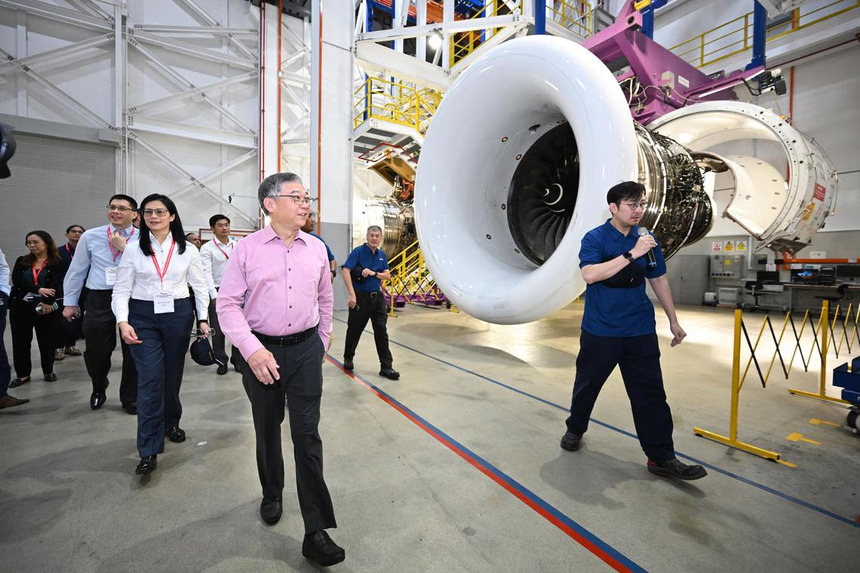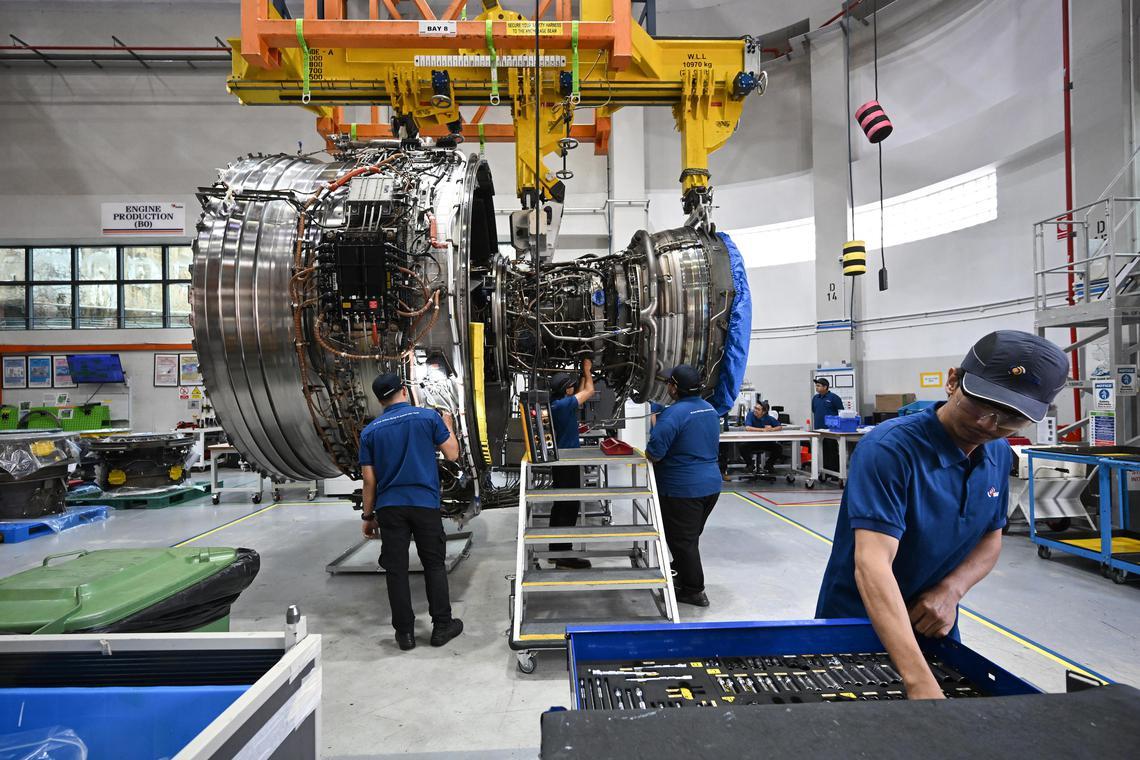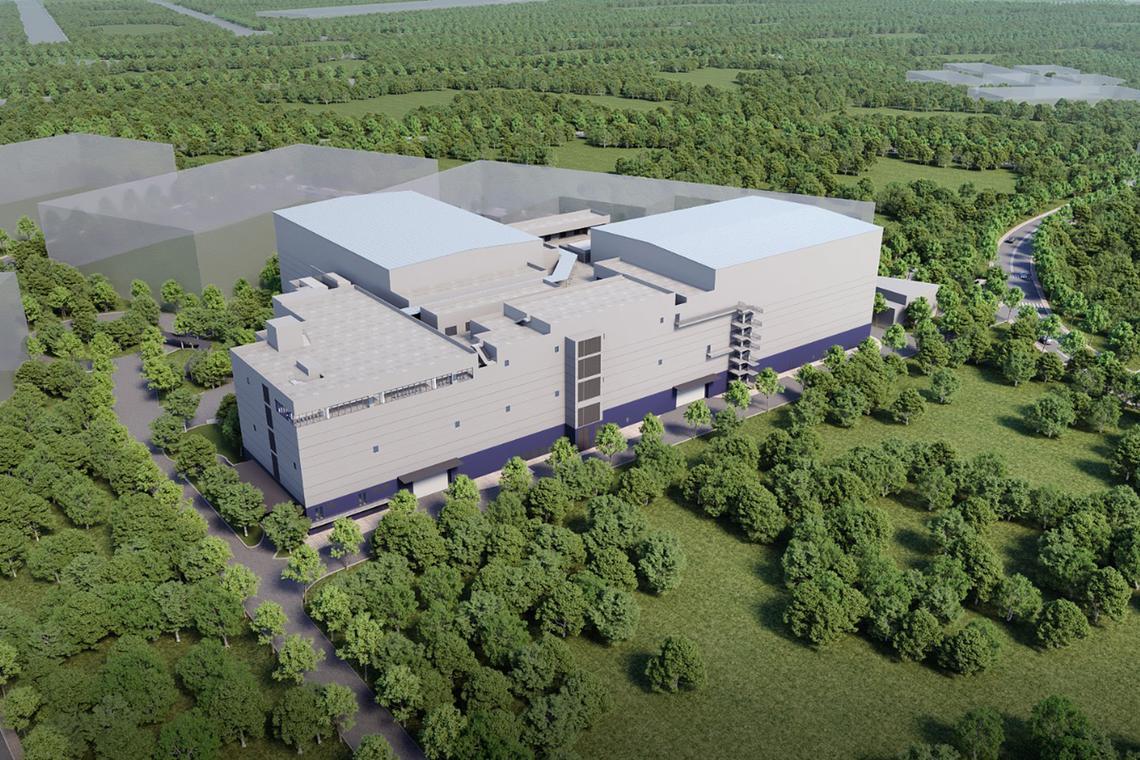Construction on new jet engine repair facility in Loyang begins as part of $242m expansion

(Photo credit: ST Photo/Lim Yaaohui)
Source: The Straits Times
An aerospace facility in the Loyang industrial estate is set to become the world’s largest maintenance site for the latest generation of jet engines that power popular aircraft such as the Airbus A350, Airbus A380 and Boeing 787.
By 2028, the facility run by Singapore Aero Engine Services (SAESL) – a joint venture between British aircraft engine maker Rolls-Royce and Singapore Airlines Engineering Company – will be able to service more than 400 engines a year, up from about 300 today.
This growth will be enabled by a new 26,000 sq m integrated service centre that will be added to the firm’s existing 60,000 sq m campus in Calshot Road in Loyang.
It is part of a $242 million expansion plan that SAESL announced a year ago at the 2024 Singapore Airshow to increase its annual maintenance capacity here by 40 per cent.
SAESL is already one of the world’s largest maintenance companies servicing Rolls-Royce’s Trent jet engines. More than 20 per cent of the world’s Rolls-Royce Trent engines pass through SAESL now, with the company supporting more than 30 airlines globally, including national carrier Singapore Airlines, Dubai-based Emirates and TAP Air Portugal, the flag carrier of Portugal.
The company said its new facility, which broke ground on Jan 16, will serve as the nerve centre of its operations when it is completed in 2027.
The new facility will come equipped with automated storage and tracking systems for engine parts, as well as robots that can deliver component kits autonomously.
The aircraft engines that SAESL services are made up of more than 18,000 individual parts.
Each part needs to be inspected down to its nuts and bolts to check if it needs to be repaired or replaced entirely before the engine is reassembled and tested.
To perform these tasks, SAESL employs more than 2,000 workers. By 2028, another 500 high-value technician and engineering jobs will be created as part of the company’s expansion.
SAESL’s $242 million investment will also cover its move into a 25,000 sq m space in Seletar Aerospace Park, which Rolls-Royce vacated when it shifted some of its operations to Britain during the Covid-19 pandemic.
Work to redevelop the Seletar space began in November 2024. The first phase of SAESL’s operations there, which will involve engine disassembly, assembly and testing, will start by the end of January.
The plan is for the Seletar plant to start repairing larger engine components in 2026, with more advanced repair capabilities to be introduced in 2027.
Other improvements include new digital systems that will be implemented progressively from 2025.
These systems will be able to forecast the amount of work that SAESL’s service centre is expected to perform and recommend how much manpower and raw material will be needed.

(Photo credit: ST Photo/Lim Yaohui)
Technical manuals will be digitised, so technicians will have access to the latest instructions.
Speaking at the groundbreaking ceremony on Jan 16, Deputy Prime Minister and Minister for Trade and Industry Gan Kim Yong said SAESL’s expansion will allow the company to capture the rising demand for maintenance, repair and overhaul (MRO) services.
Mr Gan said Singapore is in a strong position to capture the projected growth, noting that the Asia-Pacific is expected to account for more than 35 per cent of the global aircraft fleet over the next decade.
Lauding a fresh injection of $34 million into an ongoing partnership between SAESL, Rolls-Royce and A*Star to develop technology that will improve operational efficiency, Mr Gan said SAESL will need new innovations to stay competitive even as it expands its capacity and capabilities.
The minister noted that the tie-up with A*Star, which began in 2017 and has already had $68 million in funding, has led to the successful roll-out of 18 projects that have reduced process lead times by 30 per cent to 50 per cent.
One example of this is a new automated visual inspection system that uses robotics, artificial intelligence and 3D laser scans to find and measure defects in engine parts.
SAESL chief executive Simon Middlebrough told reporters that the biggest benefit to the expansion of its facilities here is the flexibility and resilience that the increased capacity will bring.

(Photo credit: Singapore Aero Engine Services)
He pointed out that as the Trent line of engines matures, more refurbishments will be needed, leading to heavier and more complex workloads.
While the increase in engine output is significant, Mr Middlebrough said he does not expect the expanded SAESL facility to handle a larger proportion of the world’s Trent engines, as it would not make sense for Rolls-Royce to ship engines from other parts of the world to Singapore for repairs.
About 10 per cent to 15 per cent of the engines that SAESL maintains come from outside the Asia-Pacific, and this should remain steady or shrink as Rolls-Royce evens out the repair capabilities across its global network, Mr Middlebrough added.
Looking ahead, he said the supply-chain snags that plagued the MRO and larger aviation sector in 2024 are expected to continue into 2025, with big gaps in the supply chain for raw materials, such as titanium, and challenges in hiring workers.
“The overriding issue in 2025 is that there is more demand than the system can (handle)... There isn’t enough capacity, and you can’t even use what you’ve got,” he added.
Mr Middlebrough said the aviation and aerospace industry is also hoping for troubled American plane maker Boeing to get back on the right footing. “The industry needs a strong Boeing,” he added.
